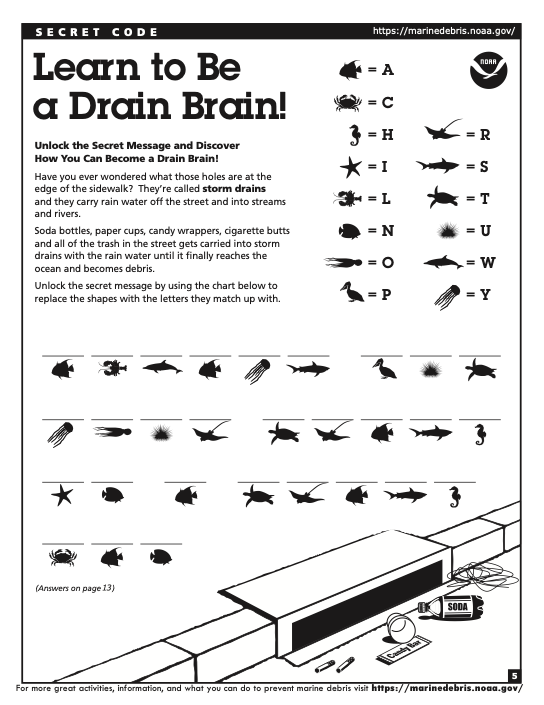Activity Guides
Below are some great activity guides to explore. Additionally, this link for Recycling Promotions/AmeriMark Direct has some anti-litter and eco-friendly coloring/activity books.
New Jersey Clean Communities Litter Activity Book
“The activity book has been produced to educate youth about the harmful effects of litter on wildlife and the environment.” – NJCC
It includes a word search, trash math, coloring page, word scramble and more.
NJDEP SEEDS Clean Water Raingers Program
“Designed for elementary school students in grades 1-6, this student action program provides teachers with the resources needed to teach about, and then involve students in, such water related concepts as watersheds, nonpoint source pollution, water conservation and aquatic habitats. Students learn about simple behaviors, skills and actions that they can undertake to help protect the state's waterways and water supply. The materials are free of charge.”
Clean Water Raingers Activity Book (20 pages, May 2017) / Clean Water Raingers Coloring Book (16 pages, May 2017)




Understanding Marine Debris, Games and Activities for Kids of All Ages
(14 pages) Created by the NOAA Marine Debris Program found on NOAA’s Activity Book page “This popular assortment of puzzles, brain-teasers and coloring activities helps children understand the problem of marine debris while having fun at the same time. Suitable for all ages.” – marinedebris.noaa.gov
Protect Our Ocean Activity Book, Be an Ocean Guardian
found on NOAA’s Activity Book page (11 pages)
“Created by the NOAA Marine Debris Program and Office of National Marine Sanctuaries, the Ocean Guardian Activity Book teaches students about the ocean, marine debris, and why it's important through word searches, games, and coloring pages. You can also sign the Ocean Guardian Pledge to protect the ocean and all the creatures that live in it. The activity book is appropriate for children in Grades K-3. Ocean Guardian Programs, created by the NOAA Office of National Marine Sanctuaries, encourage children to explore their natural surroundings to form a sense of personal connection to the ocean and/or watersheds in which they live. View other resources supported by National Marine Sanctuary System here.”









